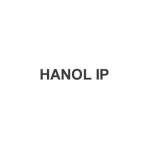The two key changes in the revised Korean Trademark Act (KTA), enforced from May 2024, are the introduction of a consent agreement system and the availability of partial replacement of international trademark registrations, both of which should correctly apply the concept of ‘identical trademarks’ for good practice. The concept of identical trademarks is important in prosecuting and using trademarks under the KTA.
This article explains the provisions and the practice regarding identical trademarks in South Korea, including the newly introduced systems in the KTA.
The ‘one application for one trademark’ principle (Article 38 of the KTA)
The ‘one application for one trademark principle’ prohibits the double registration of an identical trademark. This principle applies to an application where (i) the applicant(s), (ii) the specimen of the trademark, and (iii) the designated goods are all “completely identical”.
It is not a violation of this principle if any factor of the above requirements is slightly different from another. If a double application is found at the examination stage, the earlier-filed application is allowed to be registered, and the later-filed application is rejected. However, even if the identical trademarks are erroneously registered, it is not a reason for invalidation, since this principle is for procedural convenience.
Claim of priority under the Paris Convention (Article 46)
When filing a trademark application in Korea claiming priority pursuant to the Paris Convention for the Protection of Industrial Property, in consideration of the purpose of the treaty, the priority is recognised for “substantially identical” marks. Thus, a priority claim is available where inevitable changes or deletions of auxiliary portions of marks occur due to differences in the trademark systems in each country. For example, if the trademark in the basic priority application is filed as a ‘standard word mark’, the specimen of the Korean trademark application is regarded as being in the same typeface indicated in the basic priority application, since the standard word mark system does not exist in Korea.
Acquired distinctiveness by use of a trademark (Article 33(2))
A trademark that could be accepted for registration on the basis of acquired distinctiveness is limited to an ‘identical’ one to the mark (goods) in actual use. It does not extend to ‘similar’ marks (goods).
Still, since it is practically difficult to display physically identical marks on various goods and media in actual use, the concept of identical marks for acquired distinctiveness by use is interpreted as substantially identical marks. For example, courts recognise acquired distinctiveness by use where the marks in actual use:
Are in a different typeface;
Omit Chinese characters that are pronounced in an identical fashion to Korean characters; and
Are combined with an independent device.
Appropriate use of a trademark in a cancellation action (Article 119(1) (ii) & (iii))
In order to be accepted as appropriate use of a trademark in a cancellation action, the mark in actual use should be substantially identical to the registered mark.
In cancellation actions, the courts consider that use of the registered trademark includes not only the use of the identical trademark with the registered specimen but also the use of modified trademarks to the extent that they do not impair the identity of the trademark as an identification of the mark according to customary trading.
Thus, where the marks in actual use are (i) adding a device to the registered mark, (ii) switching the composition of English and Korean letters, and (iii) omitting Korean letters that are pronounced in an identical way in English, the courts acknowledge that such use is appropriate use of the registered mark.
However, if the marks in actual use are changing or omitting the elemental portion of the registered marks, and/or causing consumers confusion as to the source of goods with regard to another person’s brand, the courts do not recognise such variation as appropriate use of the registered marks.
Consent agreement system (Articles 34(1)(vii) and 35) and replacement of an international trademark (Article 183)
Under the newly introduced consent agreement system, a rejection ground based on a third party’s earlier mark similar to the applied mark can be resolved by submission of a consent agreement. However, this new system is not applicable when the earlier mark and the filed mark are identical. An identical trademark in the consent agreement system means a completely identical mark. Thus, it is still possible for substantially identical marks to coexist if the typefaces, colours, or compositions of the marks are slightly different, or the designated goods do not completely overlap.
According to the statistics of the Korean Intellectual Property Office (KIPO), more than 600 consent agreements have been submitted over the past six months, and, accordingly, the rejection ground has been overcome in most of the applications that completed an examination. Thus, KIPO believes that the consent agreement system has been successfully adopted in Korea.
In addition, under the revised KTA, partial replacement of an international trademark registration is allowed in Korea. Namely, even if an existing Korean registration does not have designated goods that compare to the corresponding international trademark, now the replacement would be allowed for partially overlapping goods. Here, for the replacement, the international trademark should be completely identical to the Korean registered mark. Thus, in order to enjoy the retroactive effect based on the replacement, the typefaces, upper and lower cases, colours, and composition of the marks should be identical.
Keynotes on identical trademarks under the Korean Trademark Act
While the exclusive scope of trademark rights to prevent a third party’s unauthorised use extends to a “similar area”, the exclusive scope of trademark rights to exploit the mark by the trademark owner itself is within the scope of an “identical area” of the registered mark.
There are several provisions that apply to identical trademarks in the KTA. However, the scope of identicalness is not always consistent. This is applied slightly differently on a case-by-case basis under the case laws or examination practices. It can be applied somewhat widely, for example, in the case of maintaining the rights of a registered trademark, or where the use of the mark does not harm the interests of others. As such, a careful approach is required when the identical trademark issue is involved, since the concept of identical trademarks can be slightly varied depending on each case.











